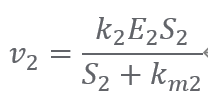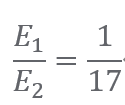Model
Overview
To provide strategies for optimizing experimental results and to further verify the feasibility of the experimental design, we use the model as a prediction. In this project, the model we designed is divided into Theoretical calculation, optimal enzyme ratio and diffusion simulation.
Theoretical calculation
We calculated the feasibility of the reaction by using the Gaussian16 computer program: We used the opt freq work type for the measurements, The Gibbs free energy prediction of H2 reduction to N-Boc-3-pyrrolidinone was performed using b3lyp functional, 6-31g (d) as base groups (other keywords: scrf= (solvent = 10 water) geom=connectivity), The reducing reaction Gibbs free energy of the R and S configurations is equal to + 7.157 kJ/mol, respectively, +3.970 kJ/mol, The corresponding redox potential is -0.037 V, -0.021 V, Referring to the redox potential of NADPH at-0.32V, We believe that the reaction is thermodynamically feasible.
Optimal enzyme ratio
We hope that the modeling calculations will lead to the optimal feeding ratio to balance the equilibrium between the two enzymatic reactions.
Table. 1. Symbol Description
|
|
|
|
|
|
|
|
|
|
|
|
|
|
|
|
Reaction1:(E1)S1+NADPH +H+⟺ P1+ NADP+

Reaction2:(E2)S2+NADP+⟹ P2+NADPH +H+

It is not advisable to assume that the enzyme consumes the substrate and the cofactor at equal rates. In order for the two reactions to be balanced, the net consumption of NADPH should be 0, which means:
Parameter is listed in the following table.
Table. 2 Parameter Selection
Table. 2 Parameter Selection
|
|
|
|
|
|
|
|
|
|
|
|
|
|
|
Bringing in the parameters and substrate concentrations we can find:

From the results the usage (mol) of the two enzymes is different. Considering the molecular weight of the two enzymes is about 2:1, the ratio should be about 1:8 (g).
However, the above calculation is based on the fact that both enzymes are at their optimal temperatures. The activity of GDH is lower at higher temperatures while the activity of TbsADH is higher. Therefore, the effect of temperature on the activity of both enzymes needs to be considered for industrial applications to reconcile the balance between the reactions.
Next :Safety Page